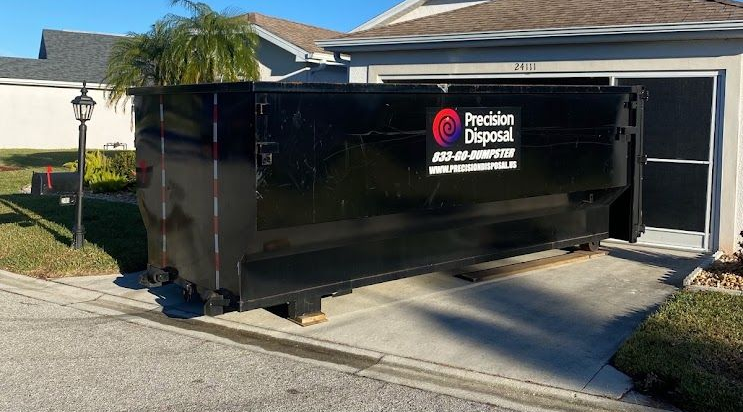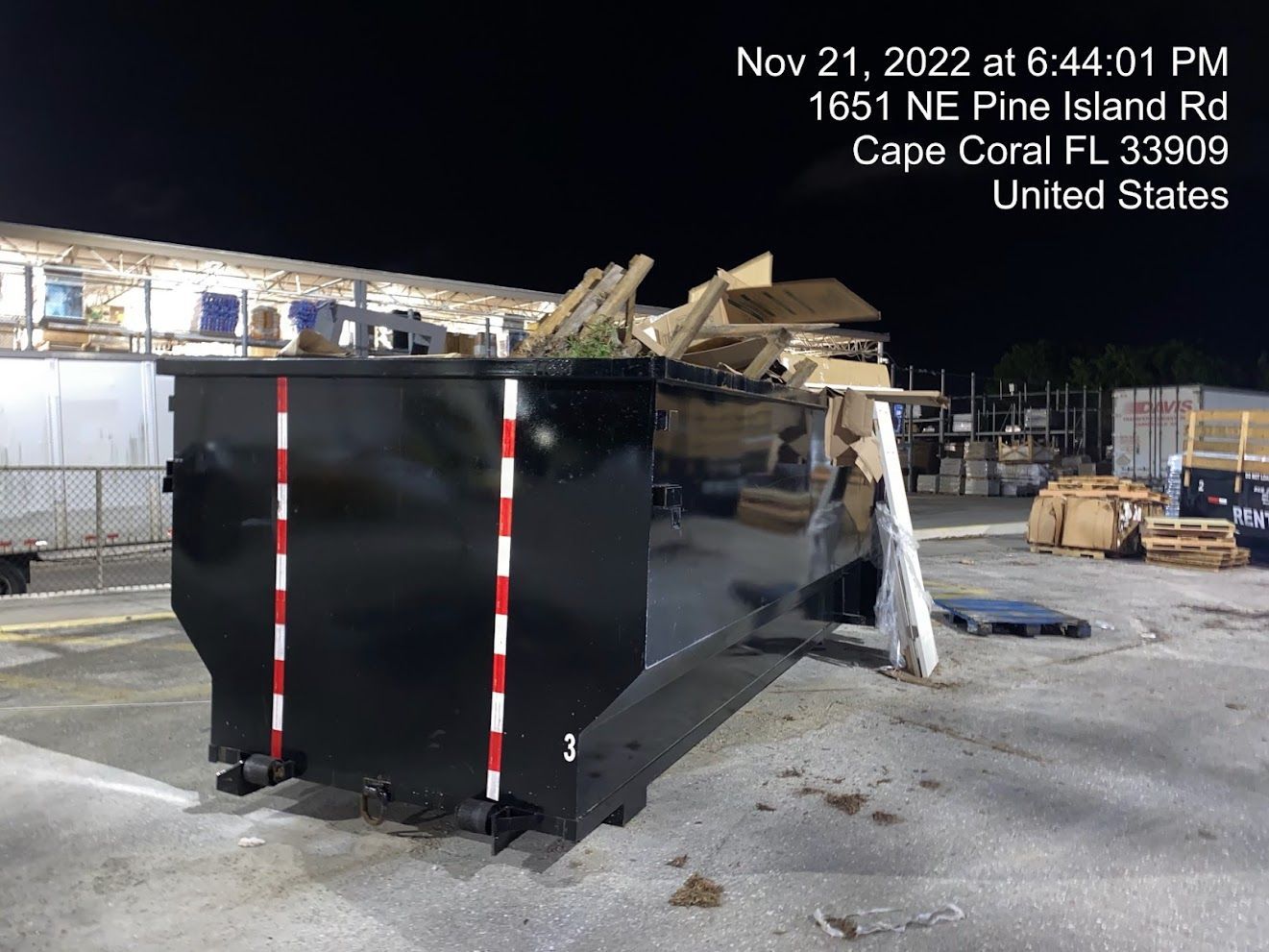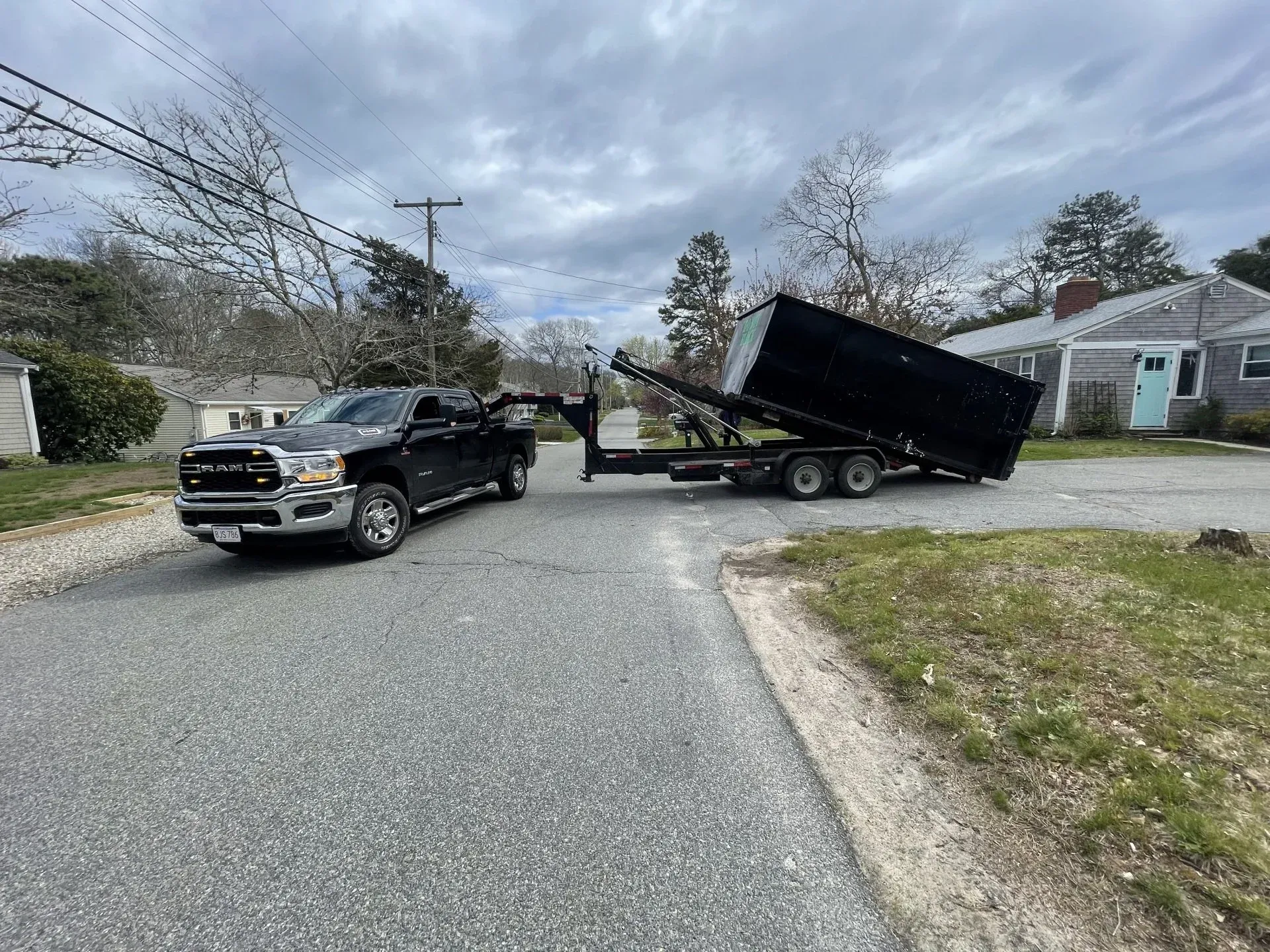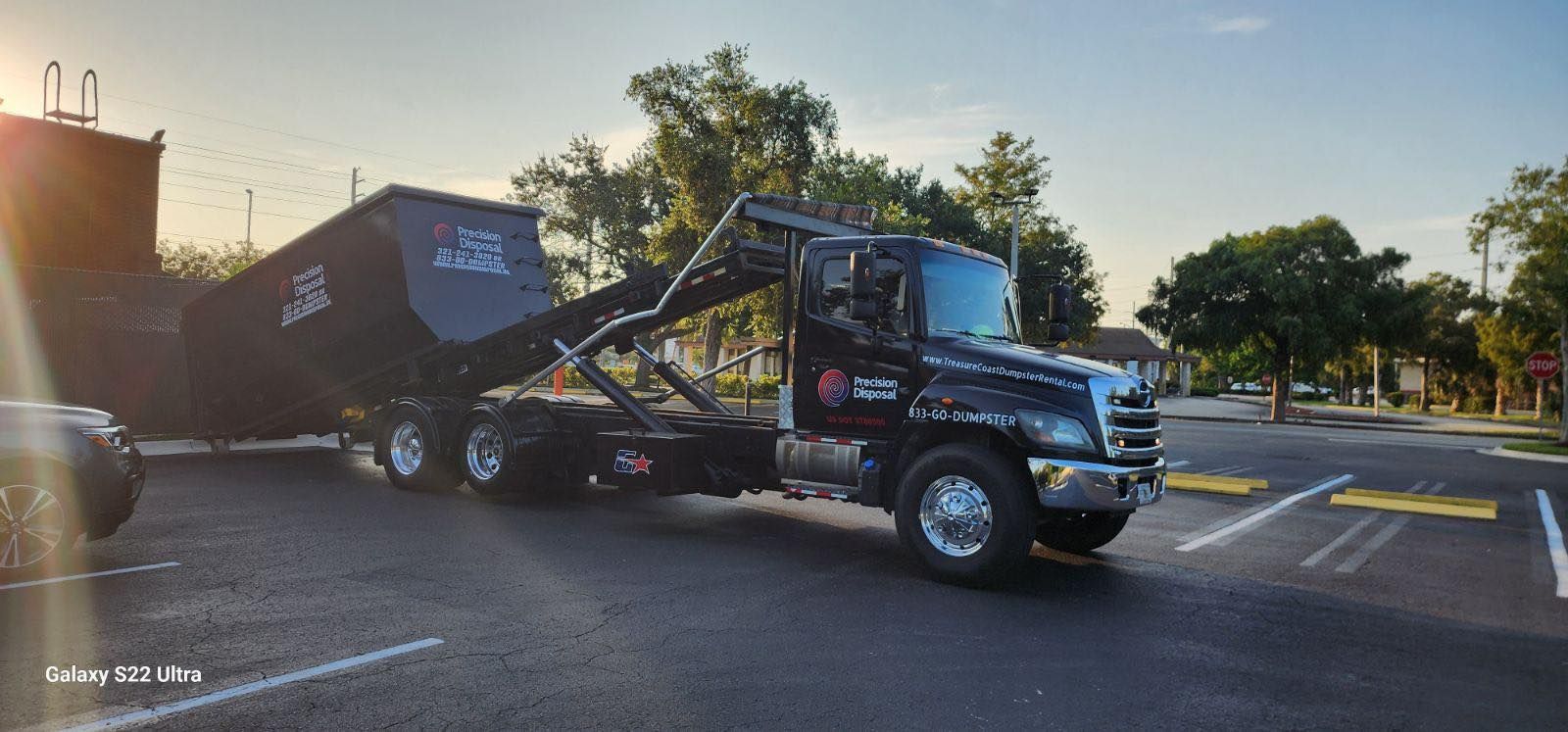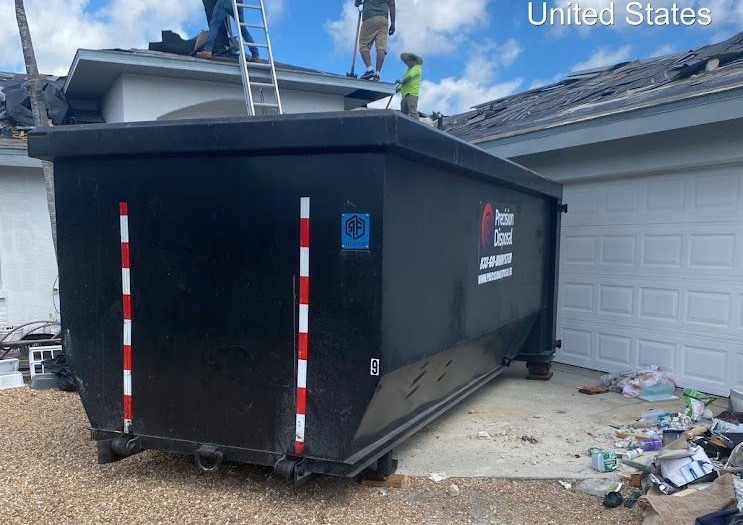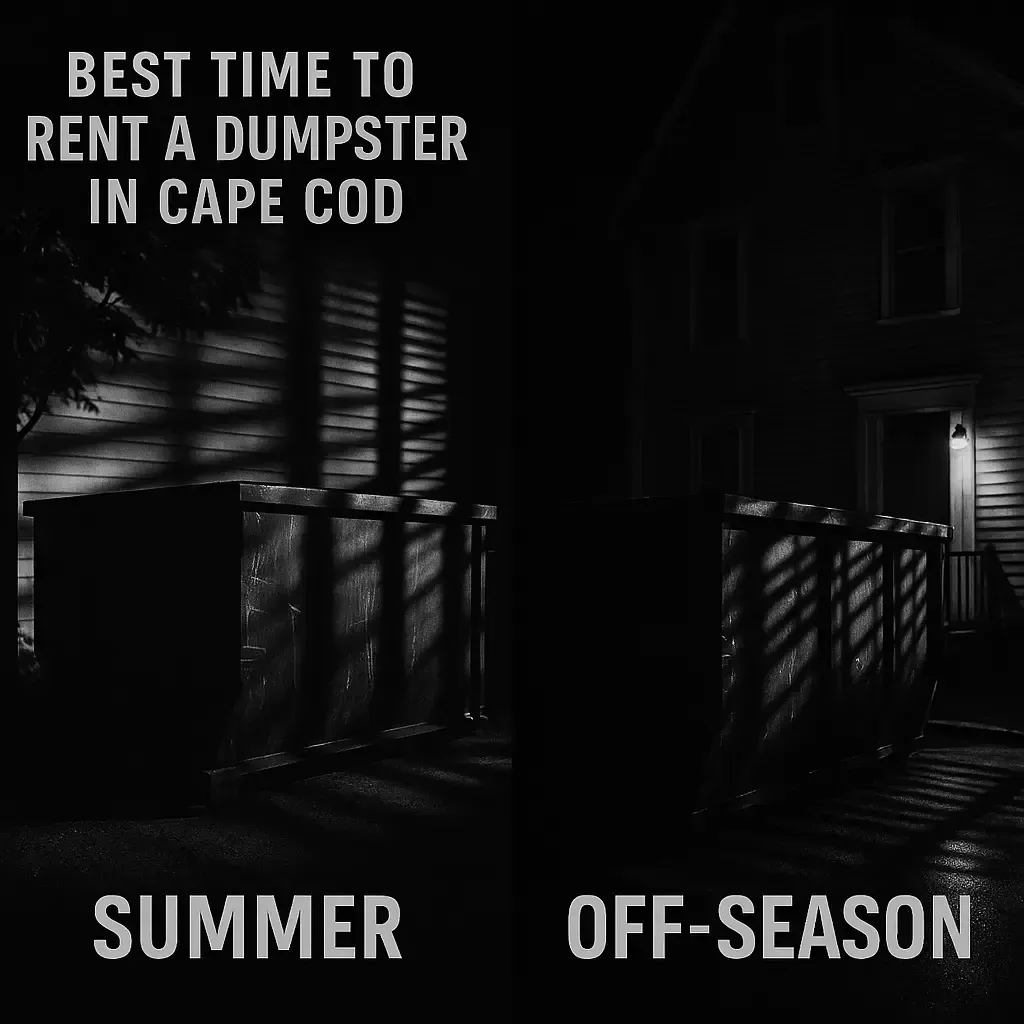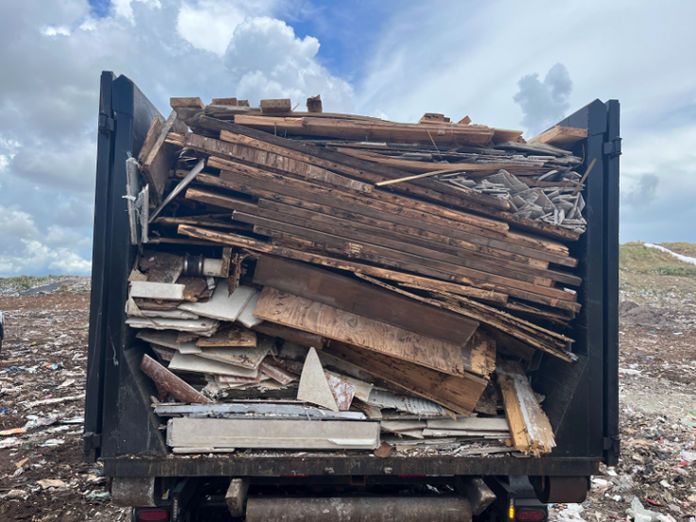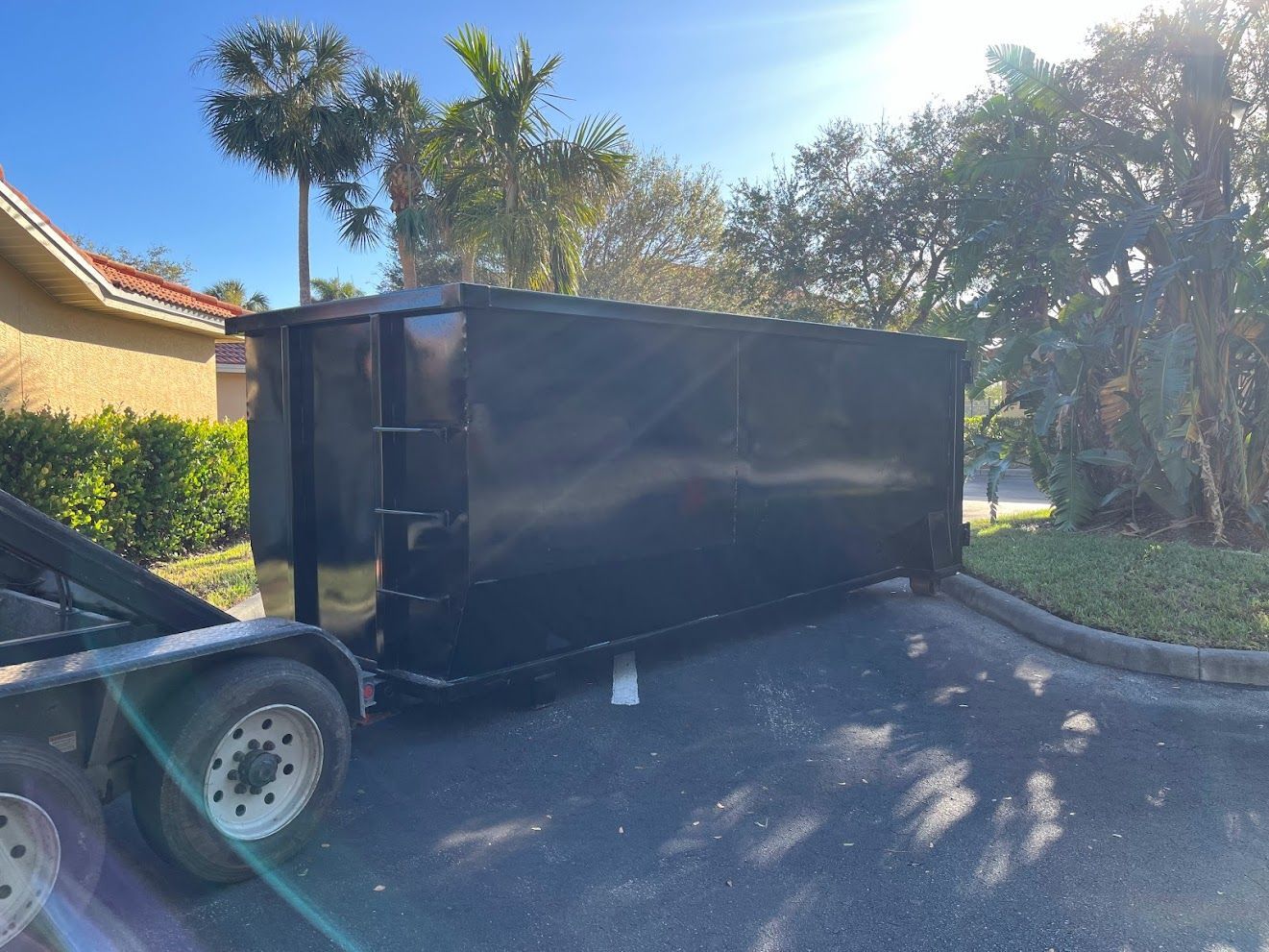How to Load a Dumpster Without Overloading | Guide + MA/FL/RI Tips
Overloading your dumpster- Doesn't save you money- and risky to Motorists
Overloaded dumpsters cost money and time. There are only two ways a load fails: overweight (you blew past the tonnage/haul limit) and overfilled (it’s above the rails or can’t be tarped). The fix is simple: plan the load, respect dense materials, and stop at the rail.
The two failure modes (so you can avoid both)
Overweight — Dense debris (concrete, dirt, shingles, plaster, tile) packs tons into little space. Even a 10-yard can go overweight if you stuff it with masonry.
Overfilled — Anything above the sidewalls or sticking out of the door is unsafe to tarp. If a strap can’t lie flat, it’s not rolling.
Make a loading plan before the can arrives
- Stage heavy debris by the door (concrete, brick, tile, roofing). You’ll place this first, low and centered.
- Know your mix. If more than ~30–40% of the job is dense materials, plan a smaller can and a swap.
- Protect the site. Lay plywood where wheels/rails land. Clear low branches and wires. Pick a flat spot with truck access.
Load in this order (and don’t improvise)
- Open the door and stack dense debris on the floor—flat and centered from front to back.
- Fill corners with lighter items (bagged trash, plastics, broken-down cardboard).
- Break down big pieces—doors off appliances, furniture disassembled, cabinets flattened. Air pockets waste tonnage and cause shifting.
- Close and latch the door once the heavy base is set. Top off from the sides with light items only.
- Stop at the rail. If it isn’t flat enough to tarp, call for a swap—that’s cheaper than overweight or a reload fee.
Heavy hitters (respect the weight)
- Concrete/masonry/brick/stone — Extremely dense. Rough guide: 1 cubic yard of concrete can approach ~2 tons.
- Dirt/soil/sod — Moisture swings weight wildly; it’s easy to overload.
- Roofing shingles — One layer across a full roof gets heavy fast; two layers = plan multiple swaps.
- Plaster/lathe & tile — Older homes generate deceptively heavy debris.
- Wet yard waste & soaked drywall — Water turns “light” loads into tickets. Tarp between workdays.
“Don’t load it” list (common problem items)
Liquids (wet paint, solvents, fuels), batteries, propane/pressurized tanks, mercury bulbs/thermostats, tires, and refrigerant-charged appliances. Keep them out to avoid rejections and add-on handling fees.
Weather & site realities
- Rain/heat (FL): Tarp every night. Afternoon storms add water weight and soft ground. Keep the approach clear after downpours.
- Freeze/thaw (MA & RI): Ice locks lids and freezes cans to the driveway. Salt/sand under the wheels, shovel a path to the hitch, and knock ice off the rails.
- Tight streets (RI & older MA neighborhoods): Leave turning room. If the truck can’t line up, you’re paying for a trip charge.
Driveway/placement rules that save money
- Boards under wheels on pavers/asphalt.
- Avoid slopes; if unavoidable, place with the door uphill.
- Keep 10–12 feet of overhead clearance.
- Don’t block hydrants, sidewalks, or mailboxes (permits may be needed for street placement).
Why an overloaded dumpster is dangerous on the road
An overfilled, untarpable dumpster turns your debris into projectiles. Boards, shingles, nails, glass, and plastic can shake loose at speed, blow out, and strike windshields, cyclists, or pedestrians. Even small items cause swerves, tire punctures, and multi-car chain reactions. Loose debris litters roadways, clogs storm drains, and spreads contaminants into waterways and landscaping—leaving you on the hook for clean-up, property damage, and fines. If it’s above the rails, it’s a hazard, not a haul.
Overweight isn’t just a fee—it’s a safety risk
An overweight container pushes the truck beyond safe axle and brake limits, dramatically increasing stopping distance and the chance of brake fade on long grades. Extra mass raises rollover risk in sudden maneuvers, stresses tires (blowouts), and strains hoists and frames during lift—any of which can lead to loss of control. It also triggers roadside inspections, citations, and potential impound, delaying your project and putting everyone on the road at risk. Keep loads within legal weight and below the rail so they can be tarped flat and hauled safely.
Quick FAQs
How do I know I’m near the ton cap?
If the floor is solid with concrete, dirt, shingles, tile, or plaster—assume you’re close. Swap before you add more.
Why won’t the driver take my heaped load?
It’s illegal and unsafe. Anything above the rail can fly out; the tarp must lie flat.
Can I mix heavy debris with furniture to “balance it out”?
You’ll hit the ton cap before you run out of room. Separate loads or plan a swap.
What size for heavy materials?
Most dense debris belongs in
10–15 yard cans with planned swaps. Bigger isn’t better for weight.
State callouts (use inside the post)
Massachusetts: Older plaster/lathe and chimney brick are tonnage traps. Go
10–15 yard and schedule swaps instead of gambling on a 20. Winter pickups require a clear, salted approach.
Florida: Hurricane/rainy season = tarp nightly, watch soft shoulders, and book swaps early. Roofing and tile are common—size for weight, not volume.
Rhode Island: Narrow, hilly streets and tight driveways demand balanced loads and precise placement. Plan set/pick windows so access is clear.

